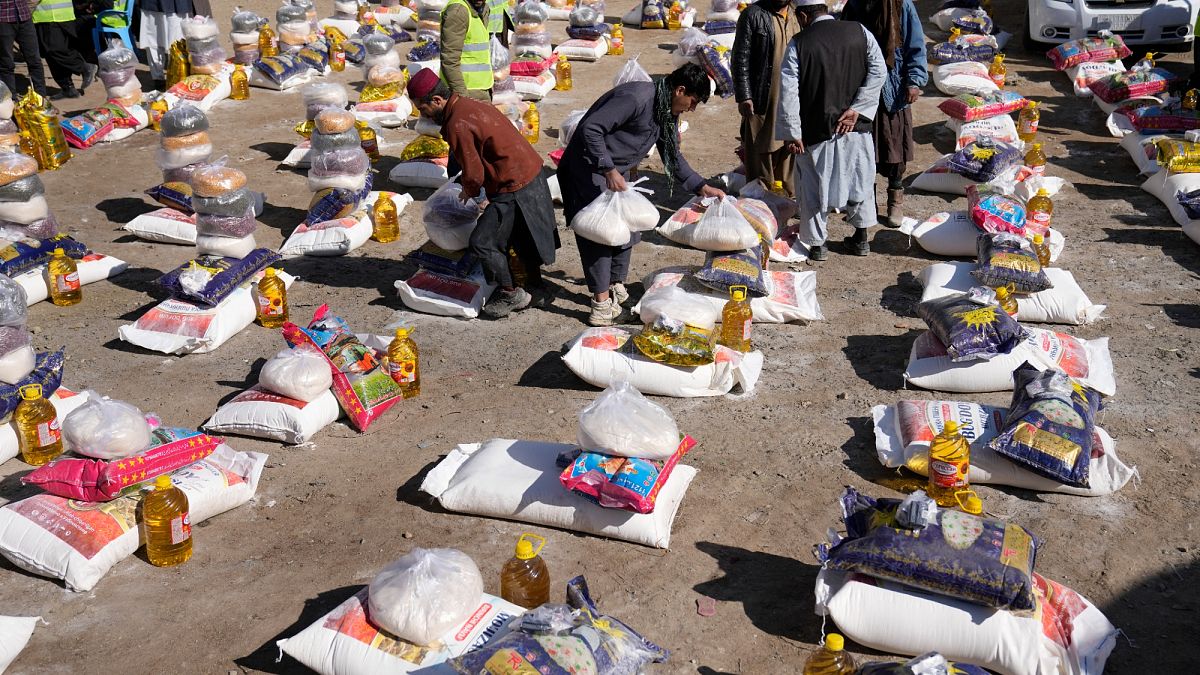The humanitarian sector is facing critical challenges following US cuts to development funding amid escalating global conflicts, the Secretary General of the Danish Refugee Council (DRC) has told Euronews.
On 20 January, Donald Trump announced a pause on all US foreign development assistance programs to conduct a comprehensive review. By 10 March, 83% of USAID programmes had been terminated, creating a US $60 billion (around €55.3 billion) funding gap.
Slente warned that unless the US restores its assistance, the sector faces an “extremely critical situation.”
“We are going to see a rising population with all kinds of elements of fragility, hunger, marginalisation, no access to services, etc. As conflicts drag on in this world, conflicts don’t get finalised and new conflicts arise,” she said, adding: “Economically, we are not prepared.”
Most organisations in the humanitarian sector relied, to varying extents, on US funding, which until recently accounted for around 40% of total global humanitarian financing.
“The US is now basically reviewing their whole portfolio of development cooperation and humanitarian assistance,” Slente said, noting that for the DRC, this means that approximately 1.5 million people it had planned to support this year with US funding will no longer be reached.
In addition to the US cuts eight European countries, and the EU itself, have announced or implemented cuts to their development assistance totalling €30 billion over the next four years, according to a report by Countdown 2030 Europe.
“They are doing it in a different manner. It’s more planned, so it’s not from day to day. They’re not cutting contracts that were already signed and being implemented. They’re planning a little ahead,” said the DRC President, contrasting the gradual manner of European withdrawal from the more sudden exit of the US.
“Nevertheless, it is going to affect both the development and the humanitarian sector altogether”, she added.
Can the EU step up?
“There’s a big open door there for the EU to step in,” Slente said. “The question is, what will the EU be able and willing to do?”
“I think we will see a funding pattern where the European donors and the European institutions will have bigger responsibility for a lot of geographies, for instance Africa. Where needs are very big, but also the Middle East, and to some extent, also Asia,” she added.
Earlier this year, in response to the US cuts, the European Commission told Euronews that the EU could not compensate for the loss of American funding.
“Everyone in the international community must shoulder their responsibility. The funding gap is widening, leaving millions in need. The EU cannot fill this gap alone,” said a Commission spokesperson.
“I don’t think either the EU institutions or other bilateral donors want to see themselves as the ones replacing US funding,” Slente stated.
“We are a little bit concerned about the trends that we see in Europe. There is not all the support that is needed for a strong stance of the European Union on these topics,” Slente noted.
She added that more and more national governments are drawing comparisons between foreign aid and domestic policy, leading to public questioning of international aid priorities, for example, why a country should fund education in Somalia rather than invest those same resources in its own education system.
Slente believes this narrative has been common in the US and “is, to some degree, even more dangerous than the funding cuts themselves because it encourages other governments to jump on board.”

